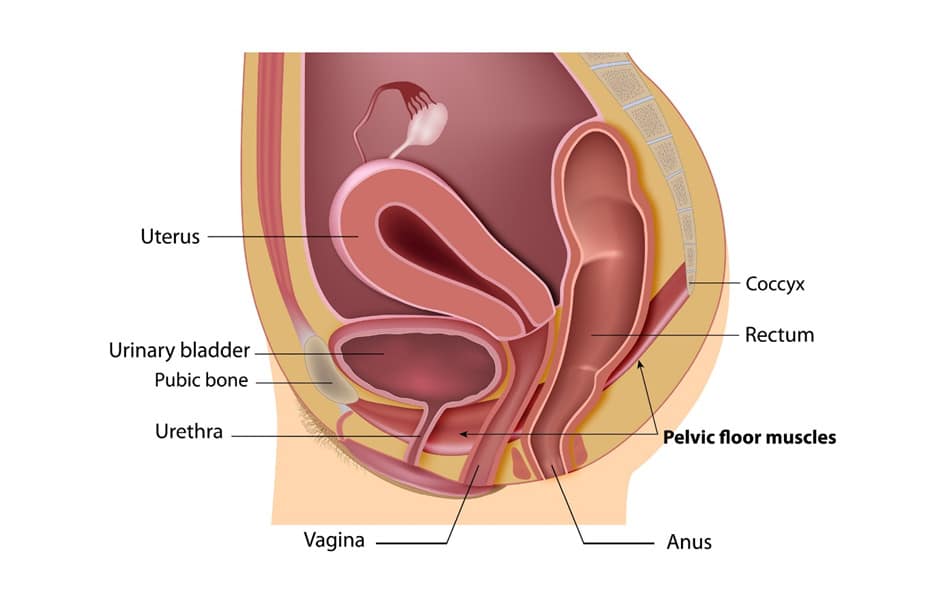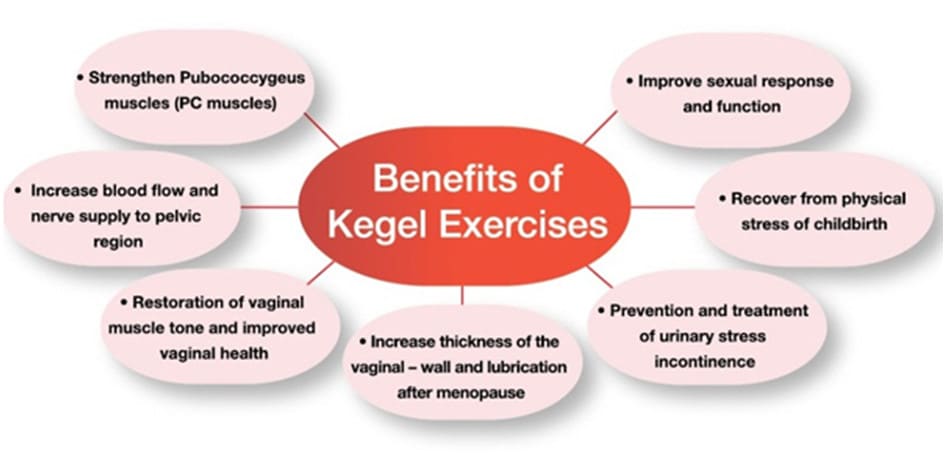Pelvic floor dysfunction refers to a wide range of issues that occur when muscles of the pelvic floor are either weak, tight. It can also be referred for when there is an impairment of the hip, pelvis or lower back.
Pelvic Floor Dysfunction

What is Pelvic Floor Dysfunction?
What Causes It?
Dysfunction of the pelvic floor muscles includes prolapse of the bladder, urethra, small intestine, rectum, uterus or vagina. Pelvic floor dysfunction occurs due to a combination of different factors:
- Birth of a child, especially by vaginal delivery.
- Obesity.
- Hysterectomy (removal of the uterus).
- Aging.
- Actions that increase pressure in the abdominal cavity (for example, lifting heavy objects).
- General deconditioning which leads to decreased core strength.
Note: the risk of pelvic floor pain post pregnancy in a caesarean section can be lower than during vaginal delivery.
Other factors: nerve damage, tumors, and connective tissue disorders. Some people have congenital disorder in the pelvic area.
Symptoms
Typically, patients manifest two or more symptoms:
- Frequency of urination/urge to urinate.
- Pain in a seated position.
- Pain in the perineum or anus.
- Pain in the genitals.
- Pain during intercourse.
- Reduction of pain when taking a hot bath or applying heat.
Pelvic Floor Dysfunction Treatment
GP’s will conduct a few examinations to diagnose the condition and will be able to choose the optimal treatment strategy for you. When pelvic floor dysfunction is caused by prolapse of the rectum or other anatomical diseases, surgical intervention is usually indicated.
Otherwise, you will be offered an initial face-to-face appointment with a Physiotherapist to develop a management plan for you to understand and care for your problem.
Exercises to strengthen the pelvic floor (Kegel exercises) can reduce undesired symptoms. These exercises help strengthen the pelvic floor muscles, the muscles around the vagina, the urethra and the rectum – used to stop the flow of urine.
Squeeze your pelvic floor muscles, stay in this position for about 2 seconds, and then relax for about 10 seconds. The period of muscle contraction should be gradually extended to about 10 seconds. The exercise must be repeated 10 times. It is recommended to do these exercises several times a day. You can do exercises while sitting, standing or lying down. Regular execution helps to cope within continence for both women and men.
Note: To learn how to correctly perform exercises to strengthen the muscles of the pelvic floor and achieve a positive effect, it is better to consult a physiotherapist.

How Long Till I Get Better
There are several methods for treating PFD with different duration. Physiotherapy helps to restore the pelvic floor. Patients learn to contract muscles correctly. Muscles get stronger with constant training. If there are painful scars in the muscles, a relaxing massage of the back, thighs, lower leg and pelvic area will help.
For all your Pelvic Floor needs, feel free to give us a call on 02 9793 8840 or Book Online

New Client Offer - 10% OFF
Are you in pain? Not sure if we can help you?
Book your initial appointment and receive 10% off any service!